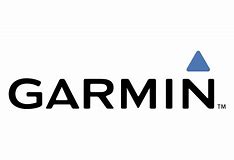
BCS and the LSI are just back from the Ardnamurchan peninsula up NW Scotland running the Coastal module for the Land-based Survival Instructor.
A large part of the course was teaching candidates about the plentiful acquisition of food in a coastal Survival situation. Spending time on the shore line you can easily understand why Sapiens and other humanoids spread throughout the planet via the coastal arteries. It is impossible to starve with just a small amount of knowledge.
In this article we’re going to look at Shellfish, mollusks and bivalves. In a survival situation these are the easiest source of protein to identify with very little physical output.
The “R” Rule
This basically states that it’s safe to forage for shellfish during the months that have the letter R in it. This is due to poisonous Algae blooming during the summer months i.e May, June, July and August. The Algae blooming is known as a “red tide”, as they turn the water a red discoloration. There are two main types of shellfish;
Filter Feeders
Filter feeders such as Mussles and razor clams do exactly what it says on the tin. They can filter upto 5 litres of salt water and hour, ingesting the plankton and other small organisms, whilst trapping poisons and Algae in their filters……cooking and eating filter feeders during summer months or a red tide is likely to cause food poisoning, even if the meat is cooked well. Undercooking filter feeders can lead to very serious illness.
Grazers
Limpits and winkles graze on plant matter….think of the as being similar to snails. The likelihood of becoming ill eating grazers is far less likely than filter feeders, however caution should be exercised.
In our eyes, one of the most underrated foragable on the shore line. We’ve all seen these large shell fish clinging to rocks, they use a sucker or “foot” on the underside of the shell to attach so they don’t get swept away by the tide. When collecting limpits a swift kick of the foot should be used to detach them by suprise, if you can’t release on the first kick then just leave it as you’ll end up cracking the shell.
Limpits can be boiled, however turning them upside down and cooking them in their shell is the simplest way to do this. When cooking them in this way, a good identification that they’re ready to eat is that they’ll release from their shell and float about. Take the meat out of the shell and turn them round, you’ll see a black sack…….get rid of this as its the stomach and digestive tract, and is full of grit.
Mussels
One of the most sought after shoreline delicacy’s, and you pay a pretty penny in a restaurant for them! Mussels are filter feeders so care must be taken when harvesting and cooking. On the shore line you’ll find mussels growing in rock crevasses where they are protected from the tides, they attach via bysall threads which unlike limpets can be easily plucked.
Due to the filter feeding nature of the mussel we prefer to boil them in fresh water. Once cooked make sure that before eating you see that the shell has parted whilst cooking. If the shell hasn’t parted then discard it, this is a sign that the mussel was probably dead before the cooking process and likely to poison you if ingested. Mussels can also be cooked in the embers of the fire, although it’s likely that the shells won’t open properly.
Winkles and Whelks
These small sea snails are superb eating, however unsubstantial. This being said they can be collected en mass and eating them is a lot of fun. Similar to Mussels winkles and whelks should be boiled up in fresh water. Once cooked, you’ll need to fashion a sharp stick to “winkle out” the meat (this is where the term “to winkle something out of someone” comes from). All small sea snails in the UK are edible.
If you want to learn more about coastal foraging and get some hands on coastal survival training then please get in contact.















 Message an Instructor now
Message an Instructor now